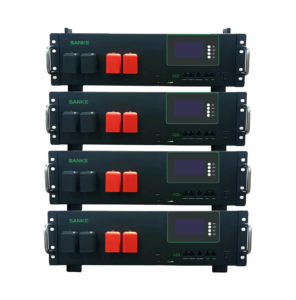Choosing the right battery format is more than just about looks. In energy storage systems, form affects function.
Server rack batteries are modular and scalable, ideal for large or commercial projects. Wall-mounted batteries are space-saving and user-friendly, suitable for homes or small offices. Each format suits different environments and expansion needs.
When I designed my first storage system, I underestimated how much mounting style affected heat, maintenance, and scalability.
What Is a Server Rack Battery?

Server rack batteries are shaped like IT rack servers and are stacked in a cabinet.
They’re built for modular expansion, cable management, and professional-grade cooling in larger systems. Most commercial battery rooms and data-center-style setups use rack-mounted systems.
| Feature | Server Rack Battery |
|---|---|
| Mounting Style | Horizontal (rack) |
| Ideal For | Commercial & industrial |
| Scalability | High (modular) |
| Heat Dissipation | Ventilated rack-friendly |
| Installation | Requires cabinet or rack |

What Is a Wall-Mounted Battery?

Wall-mounted batteries are vertically installed on a wall, similar to home backup units.
They’re compact, easy to install, and designed for clean home aesthetics. Most residential solar backup or hybrid systems use wall-mounted formats.
| Feature | Wall-Mounted Battery |
|---|---|
| Mounting Style | Vertical (wall) |
| Ideal For | Residential & light office |
| Scalability | Moderate (usually fixed size) |
| Aesthetics | Sleek, minimal |
| Installation | Simple bracket-mount |
Which Is Better for Long-Term Expansion?
Server rack batteries win in scalability.
If your system needs room to grow, rack batteries let you stack more modules easily. Wall units may need a full replacement if capacity needs rise beyond their fixed size.
Example
- Rack system: Start with 2 modules, expand to 6 later in the same cabinet
- Wall-mounted system: May need to buy another whole unit and reconfigure wiring
Which Format Is Easier to Install?
Wall-mounted units are easier for quick residential installs.
One person can mount a unit with a few tools and minimal wiring. Server racks often require a separate frame, airflow planning, and possibly two installers.
Installation Notes
- Wall-mounted: 1–2 hours, single unit
- Server rack: 3–6 hours, multiple modules
Heat and Ventilation: Who Handles It Better?
Server rack systems handle heat more effectively.
With front-to-back airflow design and rack ventilation, rack systems stay cooler under heavy loads. Wall-mounted units may require additional spacing to avoid overheating.
Conclusion
Both server rack and wall-mounted batteries are good. Rack batteries are better for modular commercial setups. Wall-mounted units work well for simple, clean residential installations.
SANKE provides both rack and wall-mount LiFePO4 battery options—over 5000 cycles, factory-direct pricing, and flexible designs to suit your energy storage setup.
FAQs
Which battery type is better for solar energy storage?
For home solar, wall-mounted batteries are more common. For commercial or large-scale solar, rack-mounted batteries allow easier expansion.
Can I install a server rack battery in my house?
Yes, but it requires a proper rack cabinet and more space. They are typically used in garages or utility rooms.
Are wall-mounted batteries more expensive?
Not always. Prices depend on brand and capacity. Wall-mounted systems are often bundled with hybrid inverters for convenience.
Which is safer: wall-mounted or rack-mounted?
Both can be safe when installed correctly. Rack systems have better airflow; wall-mounted units are sealed and user-friendly.



